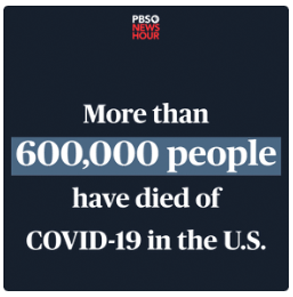Health Plan Weekly
-
Law Helps Smooth Transition From Medi-Cal to Covered California
A California law designed to help people transition from the state’s Medi-Cal Medicaid program to Affordable Care Act exchange plans has been successful at keeping people insured since its launch last year, according to a recent report from the nonprofit California Health Care Foundation. JoAnn Volk, the study’s lead author, tells AIS Health the analysis is based on “early data,” so it is too soon to draw any long-term conclusions, although she noted that insurers have praised the rollout.
Starting in July 2023, people in California who lost Medi-Cal coverage could opt to be automatically enrolled in Covered California, the state’s marketplace. Those people were enrolled in a zero-premium or subsidized marketplace plan as the default option, although they also had the chance to opt out of coverage or select a different plan.

-
News Briefs: Elevance Expands ACA Exchange Plans to 3 New States
Elevance Health, Inc. will offer Affordable Care Act exchange plans in three new states next year. The insurer’s Wellpoint-branded plans will expand into Florida, Maryland and Texas — all states where it has a managed Medicaid presence. According to AIS’s Directory of Health Plans, Elevance Health has approximately 1 million members enrolled in ACA exchange plans, making it the insurer’s smallest market segment. As of 2024, the insurer offered exchange plans in 10 states, with California, Virginia and New York representing its three largest markets.
The value of Affordable Care Act marketplace plans decreased from 2014 to 2023, according to a Paragon Health Institute report published on Sept. 3. The authors — actuaries Daniel Cruz and Greg Fann — noted that just 11% of exchange customers were enrolled in plans with broad provider networks in 2023, down from 36% in 2014. During that same period, gross premiums in the individual marketplace increased 50% more than premiums for people enrolled in employer plans. The authors argued that “the ACA insurance rules caused premiums to increase and led insurers to offer narrower and more restrictive networks over time” and that “the design of the ACA premium tax credits has also incentivized enrollees to select lower-quality plans.”

-
Broker Community Fears Domino Effect of Centene Part D Pay Debacle
In an email to contracted brokers on Aug. 23 that has now stirred considerable controversy, Centene Corp. said it would no longer pay new and renewal commissions for enrollments in its stand-alone Prescription Drug Plan (PDP) products.
For insurance agents who previously enrolled clients in a Centene/Wellcare product and anticipated putting time and resources into continuing to serve that client, the rug was effectively pulled out from under them. Fearing that the move could set a dangerous precedent, the broker community over the last week has rallied to voice its objections and demand answers from the leading PDP carrier.

-
Discrimination Cases May Have Fueled Aetna’s Fertility Services Coverage Shift
CVS Health Corp.’s insurance division, Aetna, on Aug. 27 revealed that it became the first major U.S. insurer to update its fertility treatment coverage policy nationally. In what Aetna called a “landmark policy change,” members of eligible plans will now be able to access intrauterine insemination (IUI) as a medical benefit, regardless of their sexual orientation or partner status.
Yet the insurer did not mention in its press release that it agreed to execute a similar policy change as part of a proposed settlement in a case filed by LGBTQ+ enrollees who claimed Aetna’s fertility treatment coverage policies are discriminatory. In fact, Aetna and other insurers are facing several similar lawsuits, says Alison Tanner, senior litigation counsel at National Women’s Law Center (NWLC).

-
Most ACA Marketplace Enrollees Are in Narrow Network Plans
Most people enrolled in Affordable Care Act exchange plans had in-network access to fewer than half of clinicians in their area in 2021, according to a KFF study published on Aug. 26. Matthew Rae, the report’s lead author, tells AIS Health the number of physicians in networks varies widely even within states and counties, yet it is still difficult for consumers to compare and choose plans.
Rae adds that insurers often limit their exchange networks to keep their costs down and competitive in a crowded field, where often dozens of plans vie for enrollees. He points out that insurers seek to price their offerings based on the second-lowest cost plan in the marketplace’s silver category, which is linked to the premium tax credits that most enrollees receive. Plans that are more expensive than the second-lowest cost silver option often only get a small number of enrollees, according to Rae.












